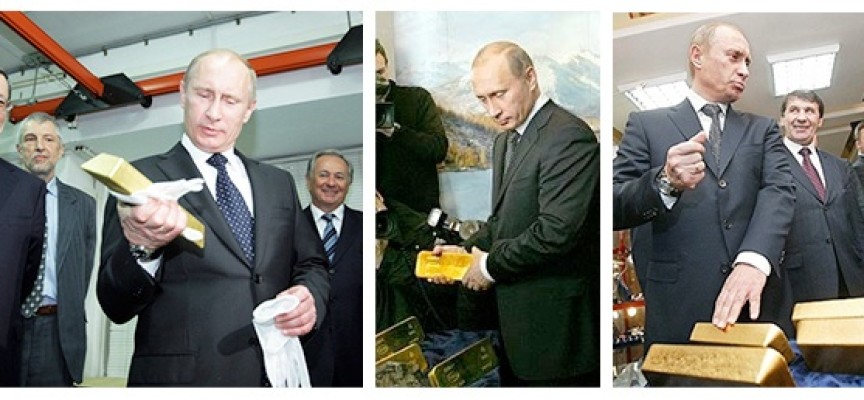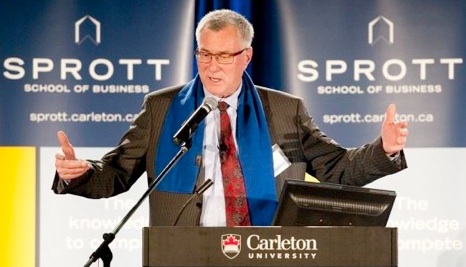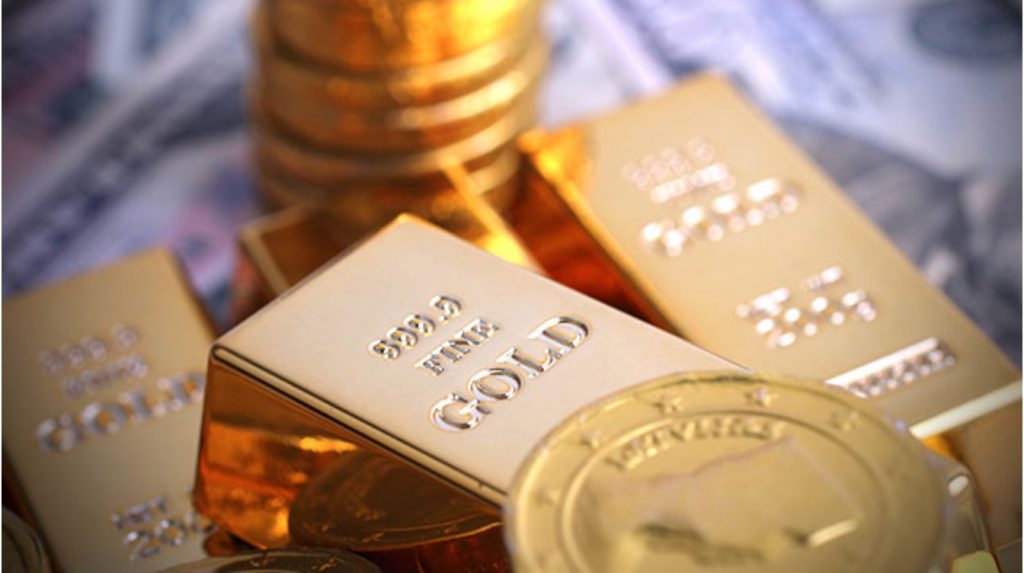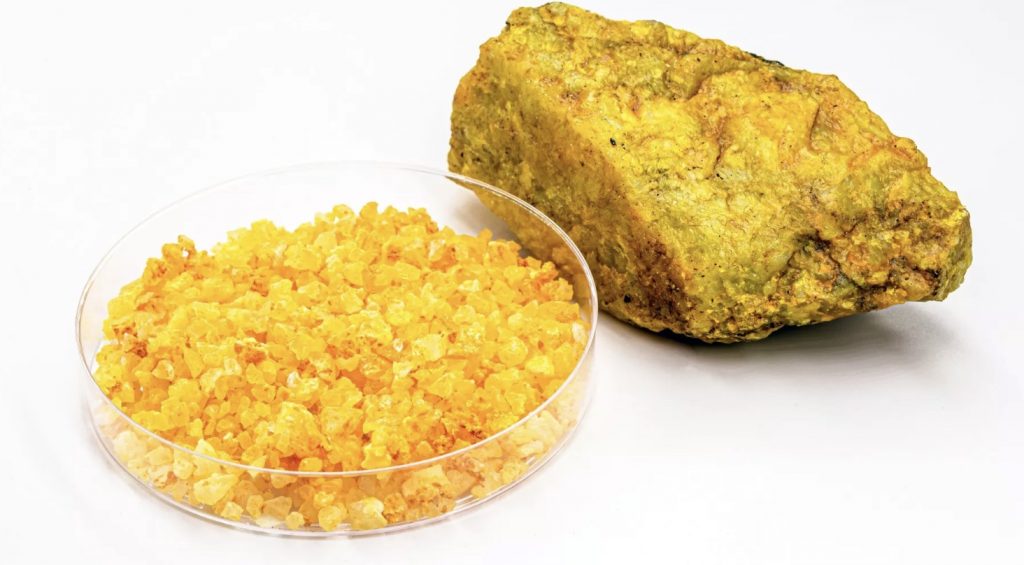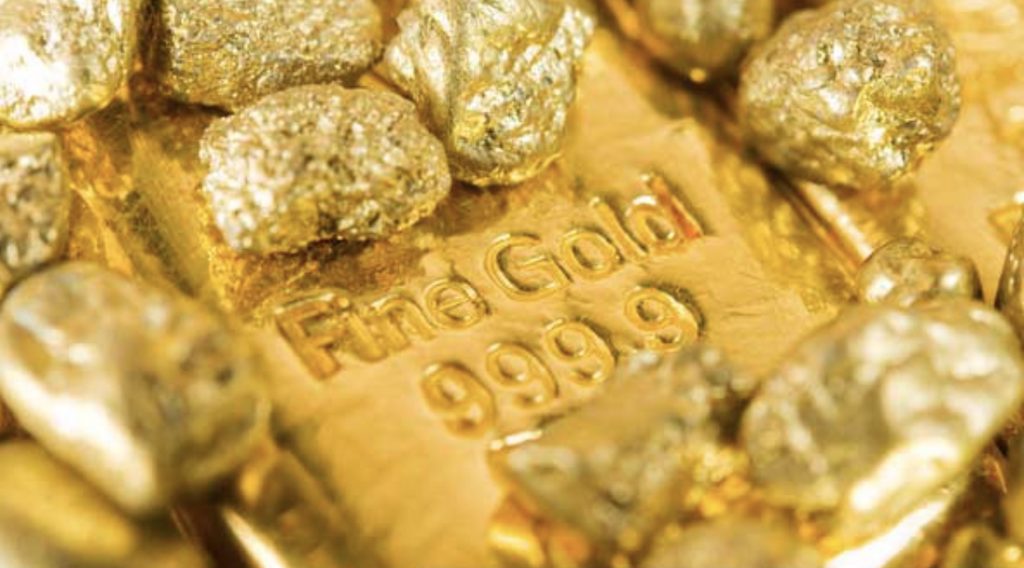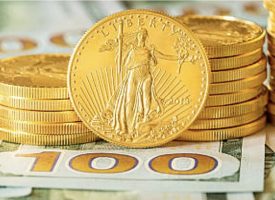Currency wars continue as Russia is leading the East to a gold-backed currency that will dethrone the US dollar as the world’s reserve currency.
Russia’s Intentions Are Clarifying
January 26 (King World News) – Alasdair Macleod, head of research at Goldmoney: We have confirmation from the highest sources that Russia and the Shanghai Cooperation Organisation (SCO) are considering using gold for pan-Asian trade settlements, fully replacing dollars and euros.
In an article written for Vedomosti, a Moscow-based Russian newspaper published on 27 December, Sergey Glazyev, a prominent economic adviser to Vladimir Putin who is heading up the Eurasian Economic Union committee charged with devising a replacement for dollars in trade settlements sent a very clear signal to that effect. It appears he will drop earlier plans to design a new commodity-linked trade currency because it has been superseded.
Furthermore, increasing numbers of nations have joined or have applied to join the SCO as dialog members, including Saudi Arabia and other important Gulf Cooperation Organisation members. The economic benefits of discounted energy, China’s investment capital, and sound money are the ingredients for a new, Asia-wide industrial revolution, while the economies of the western alliance sink under rising prices, rising interest rates, collapsing financial markets, and collapsing currencies.
While it will mark the end of the road for the western alliance and its fiat currencies, Putin must be careful not to take the blame. Now that the alliance is racking up tanks and other equipment for the Ukrainians, they are actively promoting a new battle, with NATO getting almost directly involved. It is that action which will drive up commodity prices, undermine western financial markets, undermine government finances, and ultimately collapse their currencies.
Putin is likely to use NATO’s impetuous action in defence of Ukraine as cover for securing Russia’s future as an Asian superstate, which will be the west’s undoing.
Introduction
We forget, perhaps, that from 1 March 1950 the Soviet rouble was on a gold standard at 4 roubles 45 kopecks for 1 gram of pure gold until 1961, when Khrushchev devalued it and refixed it to the dollar. Stalin had been a signatory to the Bretton Woods agreement but refused to join it and make the rouble subservient to the dollar as its intermediary for a gold standard.
The Soviets’ rouble was eventually driven off its gold standard by disastrous economic policies. Faced with reforming the command economy system and accepting the economic failures of communism, in 1961 the currency had to give way. This is worth mentioning to remind us that the Russians are no strangers to a gold standard, were not brought up with Keynesian beliefs inculcated in their institutions and are probably viewing the west’s fiat currencies in that light. From unhappy experiences, they are also fully aware of the power of the dollar’s hegemony, and in the absence of military action that it is America’s weapon of choice…
This Company Has A Massive High-Grade Gold Project In Canada And Billionaire Eric Sprott Has A Huge Position! To Learn Which Company Click Here Or On The Image Below.
Out of adversity, comes opportunity. By cutting Russia off from the west’s SWIFT system a year ago, the western alliance focused Russian minds. At a stroke, her fiat currency reserves were made worthless, and being beyond the western alliance’s control the real value of her gold reserves made supreme. It has ensured that for Russia and her allies’ gold was to be valued at a significant premium to the alliance’s fiat currencies. Furthermore, US insistence that gold no longer provides an anchor for currencies is now exposed to the Asian hegemons as little more than a self-serving sham.
It is in this light that we must view Russia’s struggle to conduct trade without using the dollar, the euro, and other western alliance currencies for settlement. Dollar credit created offshore by Chinese and other friendly banking systems without using the US correspondent banking system is a stopgap. But in practice is a limited solution, and liable to disruption by further American sanctions against participating banks. Furthermore, it does nothing towards a solution for doing away with western currencies for pan-Asian trade settlement entirely.
As a substantial net exporter, Russia is left with relying on China’s renminbi — not an ideal solution — and accepting soft Asian currencies: Indian rupees, Turkish lira, Iranian rials, and others. Undoubtedly, this spurred a committee under the aegis of the Eurasian Economic Union (EAEU), incorporating Russia and the lesser states of Belarus, Kazakhstan, Kyrgyzstan, and Armenia to design a new trade settlement currency. In a preliminary announcement last year, the head of this committee, Sergey Glazyev, suggested it would be based on the currencies of the member states and a basket of commodities relevant to their trade. Furthermore, it was a currency system intended to be available for other nations to join.
Last June, in an article for Goldmoney I argued that Glazyev’s initial proposal was impractical, and he should be using a gold backed currency to achieve his objectives. Subsequently, there was some resonance with this view, because in July Glazyev proposed a new Moscow gold exchange, ostensibly to replace Russia’s loss of access to the London market for Russian mined gold and its refiners. His involvement in this project was not just coincidental. At that time, in an update to his initial proposal Glazyev pointed out that gold together with a basket of commodities could act as “collateral for a new settlement currency” (i.e., a modified EAEU plan), giving easier access for all members of the Shanghai Cooperation Organisation.
The ground was shifting. There was little doubt that Glazyev’s original plan was being abandoned, dropping national currencies out of the proposed construct, and enhancing the role of gold. But it was still the case that the inclusion of a basket of commodities would be bettered and simplified by using gold alone as “collateral” for the trade currency. Furthermore, the geopolitical imperative was evolving at pace.
Enter the Middle East…
In recent months it has become clear that Saudi Arabia saw its future to be more aligned with the China-Russia axis than the west, and specifically members of the western alliance. In part, this was perhaps the natural consequence of the American led “unfriendlies” — as Putin called them — planning to do away with carbon fuels entirely in the next decade or two. And while Asian nations, such as China and India were paying lip service to climate change, it was clear they would continue to use fossil fuels. It was time for the Saudis and other oil and gas exporting members of the Gulf Cooperation Council to enter into long-term supply agreements with China, India, and other members of the wider SCO family. Accordingly, the Saudis announced their intention to join BRICS, Qatar announced a 27-year natural gas supply agreement with China, and President Xi was welcomed on a state visit to Saudi Arabia when mutual trade agreements were signed.
Egypt and Qatar became dialog partners of the SCO in September, and Saudi Arabia was admitted in November. The SCO has also agreed to admit Bahrain, the Maldives, the United Arab Emirates, Kuwait, and Myanmar as dialog partners. Bearing in mind that the SCO is dominated by China and Russia, both of which want to replace the dollar, the inclusion of these members of the Gulf Cooperation Council who until now have accepted dollars exclusively for energy sales must be causing consternation in Washington. While some GCC members have been careful to not rattle Washington’s cage, the Saudis have been clear that they are now prepared to accept other currencies for oil, signalling a wider transfer from petrodollars to petroyuan…
This Is Now The Premier Gold Exploration Company In Quebec With Massive Upside Potential For Shareholders click here or on the image below.
What we cannot know is what, if any, assurances the Saudis sought and were given as to the relative soundness of the yuan and the other Asian currencies they would receive for oil relative to the dollar. The purchasing power of the dollar beginning to decline more rapidly is reflected in higher price inflation, and its long-term prospects as a pure fiat currency must have been part of the Saudi’s equation. But given that oil exports to the western alliance were set to decline and be replaced by Asian demand, a currency switch would be on the cards anyway.
Central to these considerations would have been Glazyev’s plans for a new commodity backed currency capable of being offered to the wider SCO membership, which the Saudis have now joined. And having dropped the national currencies element in the proposed new EAEU trade settlement currency, Glazyev would have been forced to accept that the only way such a currency would work practically would be to base it on gold as proxy for a basket of commodities. As all roads were said to lead to Rome, everything points to gold. The EAEU currency proposal was now dead before arrival.
In an article entitled “Golden rouble 3.0: How Russia can change foreign trade infrastructure” written for Vedomosti, a Moscow-based Russian business newspaper published on 27 December, Glazyev laid out his latest thoughts. Furthermore, it was co-authored by Dmitry Mityaev, who is Assistant Member of the Board for Integration and Macroeconomics of the Eurasian Economic Commission — so this article is not just Glazyev’s musings, and we can assume it carries official weight.
From this article, the EAEU currency commission now appears to have dropped the proposal for a new currency entirely, using gold instead as the principal means of settling trade imbalances. Presumably, the requirement to make payments in gold could be circumvented if one or more national currencies went onto a credible gold standard. Unless trade imbalances are substantially compensated for by investment flows, this may have to be the case. The implication is the rouble will readopt a gold standard due to a lack of outward investment relative to the trade surplus, reviving the gold backing (though not the relationship) that the Soviets operated between 1944 and 1961.
To reinforce the importance of a return to a gold standard, both Russia and the Saudis heading up OPEC+ will be aware of the true cost of the fiat petrodollar regime for their primary export product — crude oil.
In August 1971, when the Bretton Woods agreement was abandoned, crude oil was priced at $3.56 a barrel and the market price for gold was $42.85. Converting this into ounces of gold per barrel gives us a value of 0.0831 ounces. Today, the gold price of oil is 0.0417 ounces per barrel, roughly half. In other words, using gold Glazyev can demonstrate that the true cost to OPEC+ of dollarisation has been to halve the value of their export revenues since the Bretton Woods agreement was suspended. By accepting a new trade settlement medium tied to gold, this US enforced erosion of oil values will cease. And to compensate for the loss of oil’s value from the ending of Bretton Woods, the gold price in dollars would have to be double that of today at over $3,800…
ALERT:
Legendary investors are buying share of a company very few people know about. To find out which company CLICK HERE OR ON THE IMAGE BELOW.
 Sponsored
Sponsored
The evidence mounts therefore, that gold provides a framework within which Glazyev intends to operate. That he must be thinking this way has become fundamental to his approach, confirmed by his many references to gold in his article for Vedomosti, to the rouble’s history tied to gold, and to the US’s debasement of petrodollars. In the UK at least, Russian media appears to be censored, so Glazyev’s Vedomosti article (referenced in endnote 1) may not be available to many readers in the west. Therefore, for ease of reference the salient points in the English translation of his detailed article are summarised as follows:
- In the nine months to September, Russia’s trade surplus with members of the EAEU, plus China, India, Iran, Turkey, The United Arab Emirates etc. was $198.4bn equivalent, against $123.1bn for the same period last year. In other words, the western alliance’s sanctions have failed to suppress Russia’s oil revenues, merely redirecting their sources.
- The trade surplus with SCO members has allowed Russian companies to pay off external debts, replacing them with borrowing in roubles. [Glazyev doesn’t make this point, but a return to the gold standard would reduce borrowing costs substantially.]
- Russia became the third largest country using renminbi for international settlements, accounting for up to 26% of foreign exchange transactions in the Russian Federation. The share of settlements in soft currencies is growing for SCO members, dialog partners and associates, replacing dollars, and is expected to increase further.
- Since these currencies are subject to exchange rate and possible sanctions risk, the best way to offset these risks is to buy non-sanctioned gold from China, the UAE, Turkey, possibly Iran, and other countries in exchange for local currencies.
- Gold purchased by the Russian Central Bank can be stored in central banks of friendly countries for liquidity purposes and the rest repatriated to Russia.
- Gold can be a unique tool to combat western sanctions if used to price all major international goods (oil, gas, food, fertilisers, metals, and solid minerals). This would be “an adequate response to the west’s price ceilings”. And “India and China can take the place of global commodity traders instead of Glencore or Trafigura”.
- Gold (along with silver) for millennia was the core of the global financial system, an honest measure of the value of paper money and assets… It was cancelled half a century ago, tying oil to the dollar. But the era of the petrodollar is ending. Russia, together with its eastern and southern partners has a unique chance to jump ship from a dollar-centred debt economy.
- By signing the Bretton Woods agreement but not ratifying it, for the USSR “Golden Rouble 2.0” played an important role in post-war Soviet industrialisation. Now the conditions for “Golden Rouble 3.0” have objectively developed.
- Sanctions against Russia have boomeranged against the west. It now faces geopolitical instability, rising prices for energy and other resources [i.e., yet more price inflation].
- In 2023, [there will be a shift from] risky investments in complex financial instruments to invest in traditional assets, primarily gold. Gold’s increasing prices towards Saxo Bank’s forecast of $3,000 per ounce will lead to a substantial increase in the values and quantities of gold reserves. Large gold reserves will allow Russia “to pursue a sovereign financial policy and minimise dependency on external lenders”. [Note that in addition to official reserves it is known that Russia has at least a further 10,000 tonnes — more than the officially declared total for the US Treasury.]
- Central banks are adding to their gold reserves. China has an export ban on all mined gold. According to the Shanghai Gold Exchange, customers have withdrawn 23,000 tonnes of gold. India is considered the world champion in gold accumulation…. Gold has been flowing from West to East… Is the West’s central bank gold safely earmarked, or is it all “de-done” through swaps and leasing? The west will never say, and Fort Knox’s audit will not either.
- Over the last 20 years, gold mining in Russia has almost doubled. Gold production may well grow from 1% of GDP to two or three per cent… Already, Russia’s annual gold production is set to rise from 300 tonnes to 500 tonnes… giving Russia a strong rouble, strong budget, and a strong economy. [Note that in this statement Glazyev reveals that he expects most of the increase of mine output is to be in its value measured in dollars.]
Glazyev is all but saying for definite that Russia will enact Golden rouble 3.0. And we should be in no doubt that Russia is backing away from the west’s fiat monetary system and sees far higher gold prices expressed in its currencies. The only question is the speed with which it is moving in this direction.
What Glazyev did not mention in his Vedomosti article, other than his reference to western central banks not necessarily having possession of their gold reserves, would be the consequences for the dollar and other western fiat currencies of gold becoming the trade settlement medium throughout Asia, or of the rouble returning to a gold standard. Inevitably, holders of dollars and financial assets, totalling some $30 trillion, would make comparative value judgements not just for the dollar but also for their exposure to other fiat currencies. Not only would this cause private sector actors engaged in cross-border trade to re-evaluate their exposure to fiat currencies, but the whole system of currency reserves held by central banks could come under threat…
ALERT:
Powerhouse merger caught Rio Tinto’s attention and created a huge opportunity in the junior gold & silver space CLICK HERE OR ON THE IMAGE BELOW TO LEARN MORE.

The indications are that Putin supports Glazyev’s thesis. But he has a wider remit, including military strategy over Ukraine. NATO is committed to send Ukraine tanks to fight a new battle, expected to start shortly when the ground freezes. In the process, NATO is about to become more directly involved in the conflict. We should be in no doubt that after an apparent stalemate, in recent months this proxy conflict is about to become a more direct involvement between NATO and Russia.
Almost certainly, the forthcoming military escalation will destabilise financial markets in the western alliance. A renewed crisis of energy and commodity price increases seems certain, which will lead to fears in the western alliance’s financial markets of higher price inflation for longer, driving bond yields up and equities lower. Neo-Keynesian investors might expect the uncertainty arising from renewed military action to drive global liquidity into the dollar, which is their traditional safe haven rather than gold. But US-centric markets fail to appreciate that at $30 trillion the currency and financial assets are already over-owned by foreigners, while physical gold is not. And they fail to appreciate that Putin can exploit this weakness.
For that would be a good time for Putin to open a war on the financial front as a major blow to the dollar’s hegemony. Under cover of the battlefield, Russia could let markets drive up prices of nearly all her exported commodities, while continuing to give preferential terms to her economic allies in the SCO. It would then be seen as a market response to the western alliances’ political imperatives. But soaring energy and commodity prices will reflect a sharp decline in the purchasing power of the dollar and its fiat currency cohort of euros, yen, and sterling.
Yet again, in pursuing purely political objectives, the alliance would be seen to be entirely responsible for collateral financial damage.
The banking system is swimming naked on an ebb tide
Being entirely fiat, the western alliance’s currencies are horribly vulnerable to Sergei Glazyev’s plans for settling trade in gold, and its implied extension into a standard for the rouble itself. If this analysis is correct, and the evidence that it is so is mounting, then China is capable of following with its renminbi. It has the required characteristics for a gold standard to work as well — export surpluses, high savings rate, low price inflation, and interest rates that truly reflect price stability.
Make no mistake: as well as its official reserves, China has more gold than any other nation. And as Glazyev points out, at 23,000 tonnes its citizens are also very big holders as well as the state and should be supportive of a gold standard. By way of contrast, with an unknown portion of the western alliance’s gold reserves swapped and leased and its entrenched Keynesian denial of gold’s monetary role, its entire fiat currency system could rapidly become at risk of extinction…
To Find Out Which Uranium Company Is Positioning Itself To Become A Powerhouse In Nevada Click Here Or On The Image Below.
At first sight, it may seem an extraordinary claim, but the last to see the danger to a currency are usually those wholly dependent upon it. Americans naturally believe that in difficult times, everyone turns to the dollar as the world’s reserve currency. And given the contemporary zeal with which everyone is beholden to the state and its paper, as an investment strategy this belief is usually correct in a self-fulfilling fashion. Only one in a million will say it is not prices that are rising, but understands that the currency is losing purchasing power. But there always comes a time when a sufficient challenge to a fiat currency is mounted by events that all myths are demolished.
It is not just a fiat currency which is threatened, but the institutional structures upon which it depends. In this regard, a Bank for International Settlements’ working paper entitled The Bank of Amsterdam and the limits of fiat money published only this month is timely[ii]. The paper’s Abstract sets out the current problem well:
“Central banks can operate with negative equity, and many have done so in history without undermining trust in fiat money. However, there are limits. How negative can central bank equity be before fiat money loses credibility? We address this question using a global games approach motivated by the fall of the Bank of Amsterdam (1609–1820). We solve for the unique break point, where negative equity and asset illiquidity renders fiat money worthless.”
The authors tell us that the Bank of Amsterdam was set up by the municipality of Amsterdam to deal with the large quantity of gold and silver coins of multiple jurisdictions, many either clipped or debased which circulated in this international trading centre. It was a bank of deposit. Customers would deposit coins and account balances were recorded in favour of the depositor. These deposit balances could be transferred to other account holders or withdrawn in specie for a small fee. It was a considerable improvement on settling transactions with coin alone.
In the words of the working paper, the bank become a proto-central bank, without initially undermining its credibility. In 1683 the bank matching deposits to coin, creating balance sheet credit. The description of the bank being a proto-central bank fits because the bank was effectively conducting quantitative easing, centred on buying in coin for fiat currency and credit, rather than for government debt as is the case today. And over time, the bank began to extend further credit, particularly to the Dutch East India Company. To cut a long story short, its balance sheet ended up with a growing and lethal combination of bad and illiquid debt as the fortunes of the Dutch East India Company declined, representing 71% of the bank’s assets while its stock of metal more than halved. As the BIS’s working paper pointed out:
“The Bank’s insolvency – and the inability of the city authorities to recapitalise it – are important elements in its downfall. The Bank’s income sources comprised mainly fees from the receipt system and interest margins on loans. However, while the loans to the VOC [Dutch East India Company] became non-performing, the bank had not been rebuilding capital to cover these losses, as profits were regularly distributed to the city. Moreover, it had neither the seigniorage income of modern central banks, nor an adequate fiscal backstop. The City of Amsterdam did make limited attempts to recapitalise the Bank, but the funds were quickly diverted back to city coffers… From the perspective of modern central banking theory, the City of Amsterdam’s fiscal capacity was insufficient to provide the sovereign backing of an institution that had become a proto-central bank.”
There is a high degree of resonance with the current situation, except instead of lending to a major corporate borrower, central banks are financing their governments, which are undoubtedly ensnared in debt traps being sprung by rising interest rates. The assumption that governments have the fiscal capacity to backstop their central banks in a way in which the City of Amsterdam was unable to do is also questionable…
ALERT:
Billionaire and mining legend Ross Beaty, Chairman of Pan American Silver, just spoke about what he expects to see in the gold and silver markets and also shared one of his top stock picks in the mining sector CLICK HERE OR ON THE IMAGE BELOW TO HEAR BEATY’S INTERVIEW.

The authors then proceed to mathematically model the conditions that led to the Bank of Amsterdam’s failure and the consequences for the currency. They claim that “there is a unique break point, defined as the state of the economy at which the agio [the relationship between the values of bank credit and coin] breaks below the target band and the value of bank money falls to zero”.
It is commonly said that modern central banks cannot go bust because they can “print” new currency. And it is assumed that respective governments with their fiscal capability can always bail them out as a last resort. Therefore, the relationship between a central bank’s balance sheet equity and its illiquid liabilities is commonly regarded as immaterial — it can and often does operate with negative equity. But, as the BIS working paper shows, there must be a break point, where these conditions are no longer enough to save a central bank and its credit in the form of its currency and deposit obligaions.
It is interesting that the BIS decided to publish this working paper only now. We can probably take it to imply that some analysts at the BIS are concerned that the current central banking cohort is in danger of the Bank of Amsterdam’s fate. This view has some support from its conclusion. It concludes with:
“Overall, our analysis demonstrates the value in reviewing historical precedents for understanding the monetary systems of today. In a context of high inflation, high global uncertainty, and competition between both sovereign currencies and now cryptocurrencies, it is particularly relevant to understand monetary competition and the factors that could lead to shifts between different monetary regimes.”
This is Zoltan Pozsar’s Bretton Woods III expressed in bank-speak. With the shift from fiat currencies to commodity-backed currencies now upon us, that time has probably arrived. While the Bank of Amsterdam took a considerable time to decline and fail, the failure of the western central banking cartel could be sudden. Rising interest rates lead to losses on central bank assets acquired through QE, and interest payments on commercial bank reserves increase as well. The Fed, European Central Bank, the Bank of Japan, and others which have swollen their balance sheets through quantitative easing are not only in negative equity but are sinking even deeper into bankruptcy. The Bank of England has only escaped this fate so far through the prescience of a former Governor who persuaded the UK’s Treasury to shoulder bond losses: but it is still beholden to paying commercial bank interest on their reserves.
Bizarrely, we should not rule out central banks failing first, thereby bringing down commercial banks. Commercial banks are more operationally geared than they have probably ever been, and with an economic downturn increasingly certain, loan losses threaten to wipe out their shareholders’ equity. Their exposure to financial markets, which was predicated on low interest rates which are now rising, brings forward systemic risks, even without the Ukraine war entering another round. But we can see from the military build-up that energy and commodity prices are going to rise again and wholesale and consumer prices as well. Interest rates will follow, central bank negative equity will rise, and over-leveraged banks will almost certainly need to be rescued.
All the troubles of the Bank of Amsterdam are suddenly revisiting the western alliance’s central banks. Shortly, we won’t need to “solve for the unique break point where negative equity and asset illiquidity renders fiat money worthless”, as the authors of the BIS working paper put it…
ALERT:
This company is about to start drilling what could be one of the largest gold discoveries in history! CLICK HERE OR ON THE IMAGE BELOW TO LEARN MORE.
Instead of a mathematical model proving something which is driven mainly by human perceptions, we can express the break point very simply. Central banks had a choice, which they no longer have. They could have chosen to protect their currencies by allowing markets to set interest rates and refusing to finance higher budget deficits. Instead, they are talking up only small interest rate increases, presumably hoping the price inflation problem will simply go away, while governments make little or no attempt to rein in their spending.
But they are in it too deep now to take that choice. With the exception of the ECB which has no specific government to turn to, they could have recapitalised themselves, and be in a position to guarantee the integrity of the entire commercial banking system. They still have that primary duty, but without the ability to do so. The BIS’s break point for their currencies has already passed.
Summary
We rely on central banks to ensure the commercial banking network’s integrity. At the least, the need for accelerated currency and credit inflation to support a tottering financial system upon which the western alliance depends can be the only solution — at the expense of their currencies.
That the western alliance is sinking into a debt crisis of its own making is unarguable. Its geopolitical strategy run by yesterday’s hegemon has already backfired by driving up energy prices for the benefit of its enemies. The time has come for Russia to oversee the financial coup de grace. Oversee it, because Russia will use the cover of the western alliance’s aggression and the consequences for its markets and financial system to deliver the blow. Russia is thinking ahead, while the alliance is in gung-ho mode.
Just as the consequences of banning Russia from SWIFT did not appear to have been thought through in advance, the consequences of a new phase of the war over Ukraine are dismissed. In initially at least, in the west a move to gold by Russia will be seen as a defensive response to protect the rouble and the value of Russia’s pan-Asian exports, and a deliberate attack on western fiat currencies will not be suspected. The evidence will be seen in a gold price which rises beyond expectations.
Russia will not make formal announcements about gold standards, because there is no need. Nor will China: instead it might reveal an increase in gold reserves. And having dropped the EAEU trade settlement currency as the intended replacement for the dollar, the SCO will effectively adopt gold in its place.
Initially, a soaring gold price valued in dollars will not create undue alarm in the western establishments: after all, it has been demonetised. This will be followed by denials of its importance. But as Sergey Glazyev put it in his Vedomosti article, gold will be used to price all major international goods (oil, gas, food, fertilisers, metals, and solid minerals). That being so, these prices will be stable with low interest rates, while prices and interest rates will be soaring in dollars. And it will then become obvious to a wider public that it is not prices that are soaring, but dollars collapsing.
But as fiat dollars, euro, yen, and pounds lose purchasing power against not just gold but all commodities, comparisons are bound to be made between the relative success of the Russia-China axis embodied in the SCO, the EAEU, and BRICS. Driven by Chinese savers, capital investment, discounted energy, and sound money Asia will boom.
And there will be little that America and its NATO allies can do to stop it.
ALSO JUST RELEASED: More Evidence A Massive Gold & Silver Bull Market Is Coming CLICK HERE.
ALSO JUST RELEASED: Look At This Shocking Inflation. Plus Gold Price Surges To $1,950 But Look At This… CLICK HERE.
ALSO JUST RELEASED: This Is What Central Banks Are Up To As Gold Continues To Crush Fiat Currencies CLICK HERE.
ALSO JUST RELEASED: Many Are Expecting Deflation But Here Is Why Inflation Hell May Still Be In Front Of Us CLICK HERE.
ALSO RELEASED: Silver Preparing For Blastoff, Plus 3 Key Charts And More CLICK HERE.
ALSO RELEASED: S&P Has Soared Since October But Gold Has Done Even Better CLICK HERE.
ALSO RELEASED: Gold Looks Strong Enough To Challenge All-Time High Of $2,075 CLICK HERE.
ALSO RELEASED: Greyerz – What The World Is Facing Is Nothing Less Than Catastrophic CLICK HERE.
© 2023 by King World News®. All Rights Reserved. This material may not be published, broadcast, rewritten, or redistributed. However, linking directly to the articles is permitted and encouraged.

